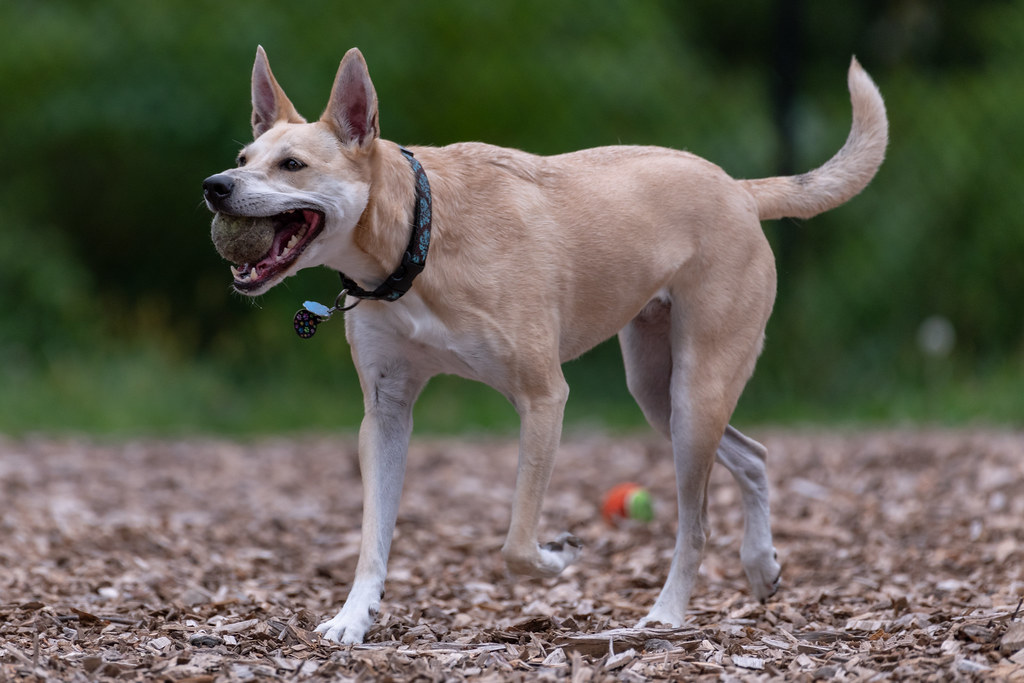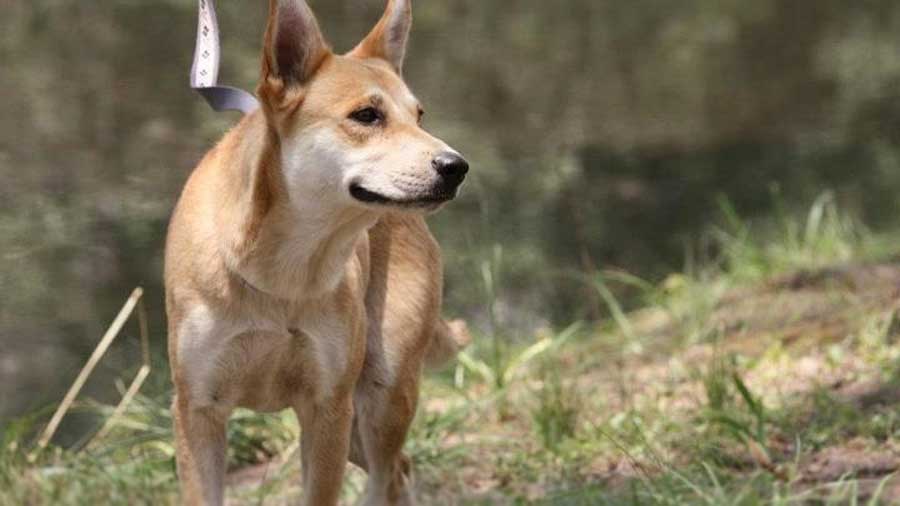The Carolina dog, also known as a yellow dog, yaller dog, American Dingo or Dixie Dingo. It is a breed of medium-sized, feral dog that lives mostly in the Southeastern United States, especially in isolated stretches of longleaf pines and cypress swamps. Rehoming of Carolina dogs has recently become popular, and they can make good domestic pets with proper socialization. Since 2008, artificial selection efforts to establish them as a standardized breed (usually capitalized as Carolina Dog) has made some progress, with recognition in two smaller national kennel clubs, and acceptance into the breed-establishment program of a major one.
Originally a landrace breed, the Carolina dog was rediscovered living as free-roaming population by I. Lehr Brisbin Jr., though originally documented in American dog-related publications in the 1920s. Carolina dogs show admixture with dog breeds from east Asia.

Description
Carolina dogs are medium-sized, height ranges from 17 to 24 inches, and weight from 30 to 65 pounds. The ears are characteristic and are erect, very long, and moderately slender, tapering way up to elegantly pointed tips and they can be individually tuned to the direction of any sound, providing an extremely sensitive hearing. The dog ranges in build from muscular yet slender and graceful to somewhat stockier animals. The dogs’ legs are also graceful but strong. The hind midsection is firm and narrow. The overall build in a healthy, properly fed Carolina dog is svelte to somewhat stockier, strong and athletic. Paws are relatively large. The snout and the notably elongated, fox-like ears are spitz-like. The tail is usually upturned and often has a hooked kink in it. The coat is usually short and smooth, characteristic of a warm-climate dog.
Colours vary and may include reddish ginger, buff, fawn, black-and-tan, or piebald with or without white areas on toes, chest, tail tip and muzzle. The eyes are at an oblique angle and almond-shaped. The eyes vary in colour but are usually dark brown or medium to dark orange. The area along the edges of the eyes is often (but not always) a distinctive black “eyeliner” colouration which becomes more pronounced by contrast in lighter-coloured dogs. The lips are often black, even in light-coloured dogs. Frequently, puppies have a melanistic mask that usually fades as the adult coat comes in.
